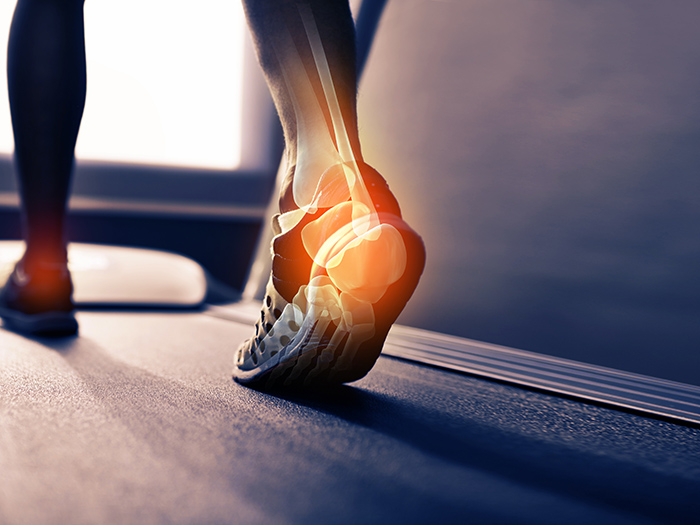Sponsored Content by FIGUR8
Measuring Movement Differently

Managing what you can measure is just as important for an injured worker recovering from a knee or low back injury as it is for a Risk Manager managing their total cost of risk or a Vice President of Claims managing their combined loss ratio.
And in any context, knowledge is truly power.
In workers’ compensation, one ongoing obstacle to the prompt and efficient recovery of injured workers is a gap in capturing and communicating relevant data about the workers’ condition. Sharing that information with the injured person so they can act on it and become more of a master of their own recovery is inarguably beneficial.
“In the workers’ compensation space, the primary goal is to help an injured worker recover and return to work. However, there is often a lack of objective data to determine whether a patient has truly transitioned from dysfunction to function,” said Rob Pace, a veteran physical therapist and chief operating officer for PRN.
PRN is a large physical therapy provider with 220 locations in 16 states. In California alone, it operates 75 offices.
“In my 25 years of experience as a physical therapist, I firmly believe that the majority of injured workers genuinely want to recover and resume their lives. They need to provide for their families and get back to work,” Pace added.
Workers’ compensation insurers and risk managers thus face one very important question: How can the physical therapy process be improved to remove the uncertainty and empower workers in the management of their recovery?
From Elite Athletes to Injured Workers

Rob Pace, Chief Operating Officer, PRN
Enter FIGUR8, a company that sprang from the imagination and experience of Nan-Wei Gong, an MIT PhD with a background in sensor technology.
Decades ago, Gong’s research group at the MIT Media Lab started working with Mass General Hospital and the Boston Red Sox on ways to understand and improve the biomechanics of elite athletes with wearable sensors.
That early experience now lives on in the form of the company Gong founded, which uses on-body sensor technology to record movement, capture important bioMotion data and encapsulate it in a format that can be easily interpreted, shared and acted upon by various stakeholders. The company’s technology and process helps physical therapists and injured workers understand where a worker is in their recovery journey and, in turn, how to advance that recovery.
The portable technology is considerably smaller than Fred Flintstone’s lunch box. But more to the point, it is really a biomechanics lab in a box.
In a Class All By Itself

Scott Sexton, President and Chief Business Officer, FIGUR8
“It can be difficult when you are a novel solution, because everybody wants to categorize us,” said Scott Sexton, a veteran of the workers’ compensation field and FIGUR8’s president and chief business officer.
Why FIGUR8’s approach can’t be easily categorized is that there is literally nothing like it. Using a standard biomechanics lab would take several hours to capture the necessary data, cost thousands of dollars, and it would take days to communicate and analyze the results. Using sensors placed on knees, shoulders and elsewhere on the body, FIGUR8 reduces that cost by 98%, and can capture and output the relevant data in a matter of minutes.
Getting that data quickly and understanding what it means can make a massive difference in an injured worker’s understanding of their progress, while enhancing their motivation, PRN’s Pace said.
“Our ability to graphically represent and quantify joint-level progression allows us to demonstrate significant improvements to patients who may feel discouraged,” said Pace.
“By comparing test results from four weeks ago, two weeks ago and today, we can objectively showcase the step-by-step progress they’ve made,” he said.
“This has led to higher levels of motivation and care plan adherence among patients regarding their recovery journey.”
“What we have developed is a sensor fusion technology to capture both muscle and skeletal data, where one component recreates accurate skeletal motion to precisely measure joint mobility, and the other component captures muscle function, including contraction timing, amplitude, imbalance and fatigue.
There is no other sensor technology that can capture this type and level of function data, which is the most critical aspect of informing an injured workers’ ability to return-to-work” Sexton said.
Objective Measurements, Improved Outcomes
This advancement in the physical therapy profession to guide the recovery of someone with a joint injury has Pace and others excited about what FIGUR8 is doing.
“In a clinical setting, the human eye can focus on five things at one time. We’re capturing thousands of data points per second, depending on the assessment type,” Sexton added.
“For example, we’re not only able to focus on the right knee and the right hip for someone with a knee injury, we can give the same attention to the left knee, left hip and the low back, so we can see the impact of movement not only on the injured body part, but the entire kinematics chain,” he continued.
“FIGUR8 provides valuable information to help make the determination of readiness to return to work more objective,” Pace said.
“It allows us to ensure that the injured side functions as well as the uninjured side. If an individual was able to perform their job duties before the injury, and FIGUR8 demonstrates that they have regained equal function, it suggests that they should be able to safely and effectively resume their work, provided we address the root cause of the initial injury.”
Empowerment Drives Motivation
Motivating an injured person by giving them better information about their condition is right in line with best practices in workers’ compensation, which include acknowledging the mind-body connection in healing.
“The mental-physical connection is significant, but it’s important to remember that each individual is dealing with unique challenges. We can’t truly understand what someone is going through when they are injured,” PRN’s Pace said.
“However, when we can demonstrate physical progress, it opens up a conversation about pain and discomfort. Even if an activity still hurts, showing them that they can safely perform it can help break through barriers and limitations they may have set for themselves,” he added.
“We’ve had an instance where we’ve had a patient come into the clinic and say, ‘Can I have a FIGUR8 assessment today, because I know I’ve been working hard and I want to be able to see my progress,’ ” Sexton said.
Helping someone in recovery stay engaged and optimistic to that degree can no doubt be beneficial in workers’ compensation.
PRN’s Pace thinks FIGUR8 is on the right track because it is not only helping to change the mindset of injured workers, but it is doing so without encumbering or interfering with the vital work performed by trained physical therapists.
“FIGUR8’s platform is relatively straightforward, and we have successfully trained clinicians to integrate it into their workflow without disrupting care delivery,” Pace said.
“In contrast, other technologies I have encountered are either prohibitively expensive — such as motion-capture systems — or too technically challenging for providers to adopt.”
To learn more, visit https://www.figur8tech.com/.
![]()
This article was produced by the R&I Brand Studio, a unit of the advertising department of Risk & Insurance, in collaboration with FIGUR8. The editorial staff of Risk & Insurance had no role in its preparation.










